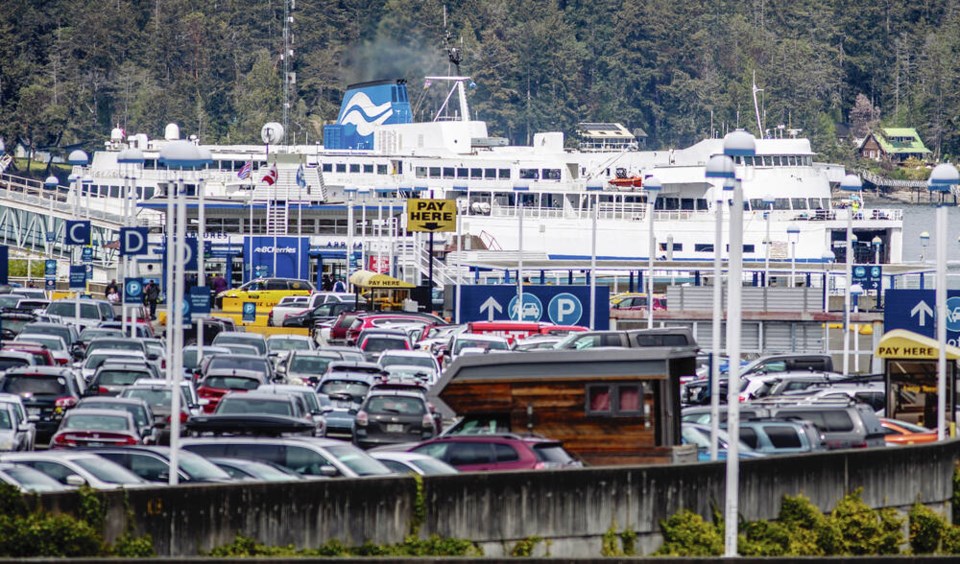The Office of the B.C. Ferries Commissioner’s decision to approve only four of the five new major vessels B.C. Ferries has asked for is shortsighted and will have a lasting impact on ferry customers, the economy and the future of the ferry service, the corporation’s chief executive said Monday.
B.C. Ferries CEO Nicolas Jimenez said the corporation has “notable disagreements” with the reasons given by commissioner Eva Hage for denying the application for all five new ships.
On Monday, Hage released a decision approving a capital plan to purchase four new major vessels, but refused permission to purchase a fifth that would have served as a relief ship.
In her 27-page ruling, Hage determined the capital expenditure for the procurement of four major vessels was essential and in the public interest. But she drew the line at B.C. Ferries adding the fifth.
The commissioner determined the fifth vessel was not essential in the first phase of a major vessel program and raised concerns about affordability, future fare pressures and what future demand is likely to be.
Jimenez said B.C. Ferries rejects each of those arguments, noting the fifth ship will never be as affordable as it is now.
“Building a series of five ships right now will be significantly cheaper than building one or two at a time,” he said.
Demand shows no signs of slowing down, he said. B.C. Ferries data indicate its fleet is effectively at capacity during peak season. Jimenez said there is a commitment to work with the government on systemic funding issues. The province allocated $500 million last year to B.C. Ferries to keep rates down. Fares were capped at an annual 3.2 per cent increase until 2027.
But Jimenez has warned they could rise by 30 per cent or more once the current rate structure expires.
“To suggest that a fifth vessel is not in the public interest does not reflect the realities of the ferry system and the needs of coastal communities,” he said. “The new ferries are going to replace aging vessels, they’re going to increase capacity and they’re going to improve reliability. And even in doing all of that, it will not fully address the long-term growth in demand. Without a relief vessel, customers are going to continue to experience congestion.”
B.C. Ferries pointed to the forced cancellation of four sailings between Departure Bay in Nanaimo and Horseshoe Bay in West Vancouver on Monday as illustrating the importance of having a relief vessel available to step in to keep people moving.
B.C. Ferries vice-president Brian Anderson noted that Queen of New Westminster recently spent 200 days out of service — another reminder of how fragile the system is.
Anderson said that one outage disrupted the fleet and cost the system approximately $14 million in lost revenue and repair expenses.
The commissioner’s decision doesn’t eliminate the need for a fifth vessel, Jimenez said — it merely postpones it to a time when it will cost the corporation more. “It’s not a cost-saving decision, it’s a cost deferral decision,” he said.
Anderson noted shipbuilding costs have increased substantially over the past five years, and said economies of scale make it more affordable to procure the fifth vessel now rather than later.
In its application, B.C. Ferries said the Queen of Alberni, Queen of New Westminster, Queen of Coquitlam and Queen of Cowichan are all nearing the end of their lives and present a growing risk for mechanical breakdowns and service disruptions due to failure of aging steel structure and equipment and availability of critical spare parts.
In the final three months of last year 149 sailings were cancelled due to mechanical issues, B.C. Ferries said.
Sailings on the major routes during 2024’s peak season ran at an average of 92 per cent capacity. Many sailings were booked days in advance, the company said.
“This is a missed opportunity to take advantage of fixed pricing to build five ships in a very affordable way for our customers,” said Jimenez. “We fully expect shipbuilding costs and demand will continue to grow, putting even more pressure on future fares and reliable service, and may hold us back from meeting the expectations of our customers and the communities we serve.”
The planned major vessels program — a longstanding goal for the company — would be its largest-ever investment in ships.
Details of the costs of the program have not been released by the commissioner, who said the numbers would remain confidential until after the project was complete.
The first of the new major vessels would be expected to enter the fleet in 2029, with the others following in six-month intervals.



